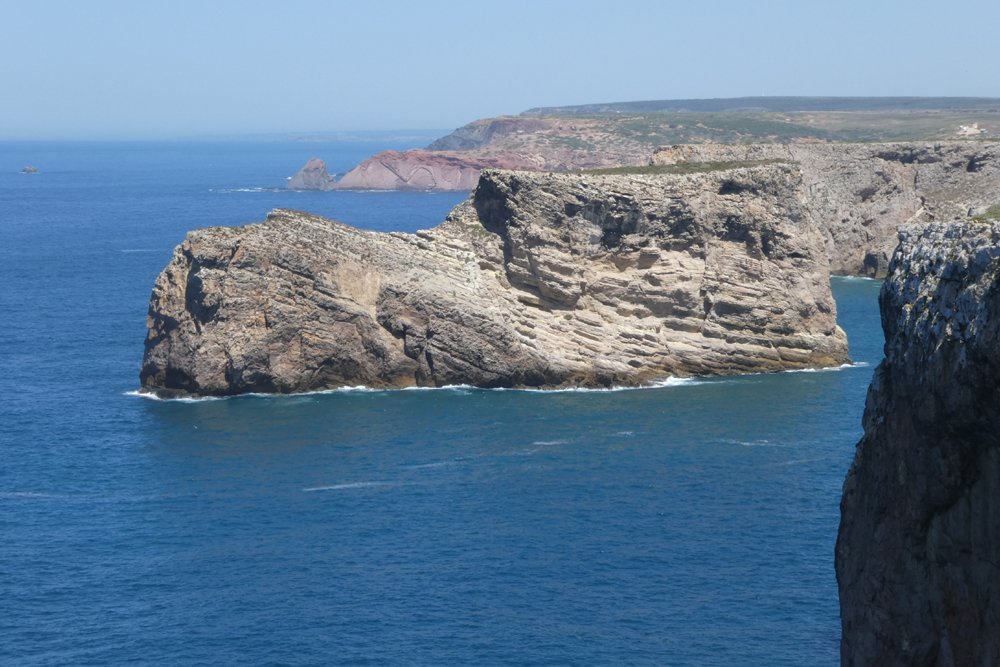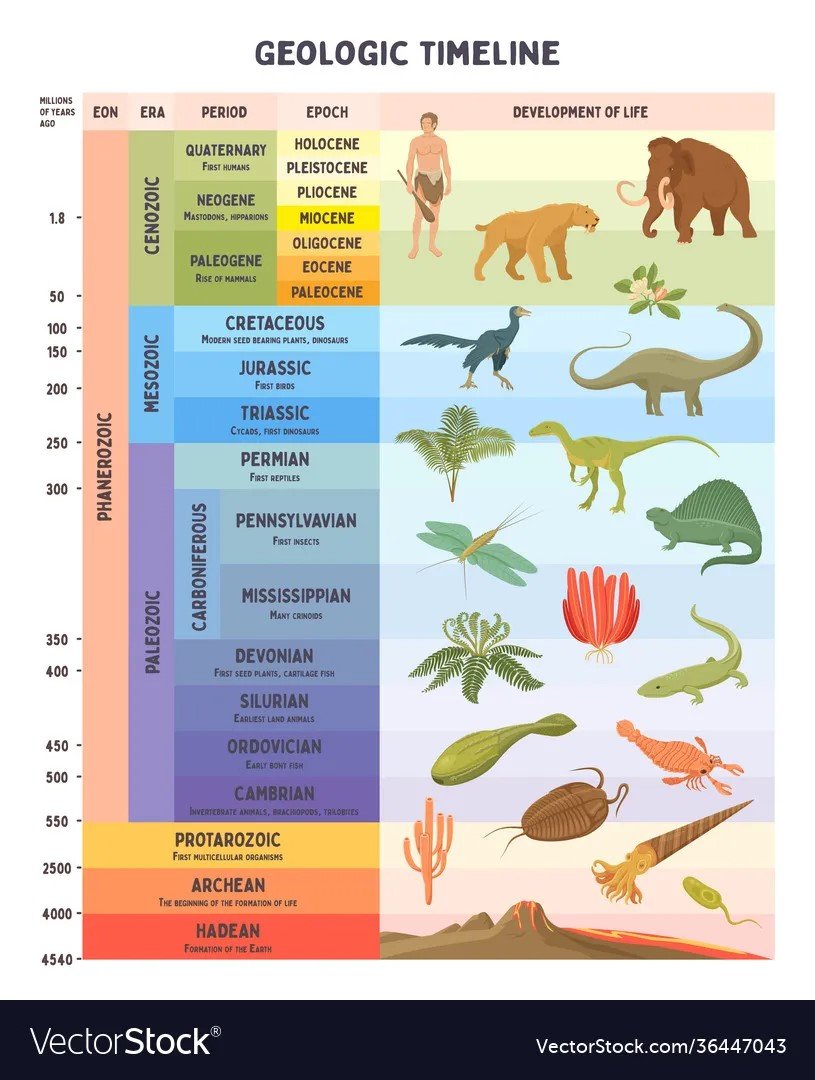The picture above of the coast north of Cabo de São Vicente shows geological rock formations which cover a time span of about 120 million years. In the background we can see Upper Carboniferous shales which were deposited about 315 million years ago, covered discordantly by red Triassic sandstones and clay, which have an age of about 210 million years. The island and the coast in the foreground are built up by Lower Jurassic limestone with an age of about 195 million years.
The geological time line shows the main terms of the geological history and the simplified evolutionary development from the Earth’s origin (about 4540 million years ago) to the present.
The geological history of the Algarve comprises hundreds of millions of years and ranges from the Paleozoic age until recent quaternary formations. It begins about 360 million years ago in the Upper Carboniferous period, when the actual Algarve region was part of the sea floor of the Rheic Ocean. When the ancient continents of Gondwana and Laurussia collided at the end of the Carboniferous period, about 305 to 300 million years ago, the Rheic Ocean disappeared and its sediments were folded and metamorphosed. During the collision the huge chain of the Variscan mountains raised, whose rests we can see in North America and in several European countries; in the Algarve, we find its remains in the shales and greywackes of the Serra do Caldeirão and Serra do Espinhaço do Cão, which make part of the so-called South Portuguese Zone of the Iberian Variscan chain.
A relatively calm epoch followed, in which the Algarve area was mainland. The collision of the continents originated the supercontinent Pangea, where the mountain chains were eroded and the surface became more and more plain. This process continued during the Permian and Triassic periods (about 300 to 201 million years ago). During the Triassic period, Pangea´s crust began to deform and basins, rivers and lakes provided the deposition of pebbles, as well as red sand and clay, whose color is due to the oxidation of ferrous components. The resulting sandstones and other sediment rocks are overlying the folded carboniferous rocks forming a spectacular angular discordance, which can be best seen at the western coast (see picture above) and in the north of Loulé.
With the beginning of the Jurassic period, about 201 million years ago, the scenery changed. The supercontinent Pangea began to disintegrate, cracks opened in the crust, lava flows and volcanic ashes covered the land. The Atlantic Ocean slowly initiated its opening. The Tethyan Sea advanced over the continent, leaving behind considerable deposits of plaster and salt, which is currently explored in the salt mine of Loulé. These evaporitic rocks were covered by thick layers of marine limestone and marls, which were deposited in a shelf platform, including some coral reefs in the western Algarve which grew during the Middle Jurassic (about 169 million years ago). During the Upper Jurassic epoch (about 160 to 145,5 million years ago), the sea withdrew and the environment conditions allowed the growth of shallow water organisms like corals, having built up large reef structures whose limestone is now explored as the ornamental rock named “Algarve-breccia”. In the Lower Cretaceous epoch (about 145,5 to 112 million years ago) the retreat of the sea continued and the land fell dry. A magma chamber intruded at the end of the Cretaceous period in the crust, about 72 million years ago. The main rock formed by this intrusion, a nephelinic syenite, originated the present Serra de Monchique in the western Algarve and is used as an ornamental rock.
The famous rock formations of Ponta da Piedade near Lagos, Praia da Rocha near Portimão and the rocks which build up the coast between Portimão and Armação da Pêra are the result of the rise of the sea level during the period of Miocene, about 16 to 7 million years ago. In this period arenitic limestone was deposited, which is rich in fossils in some places. The later erosion by carsification of this limestone created the bizarre shapes of the mentioned coastal formations. Pliocene and Quaternary formations (about 5 million years ago until today) can be found in sandy river, beach and shallow sea deposits, as well as in the recent dunes and islands of the Ria Formosa.





